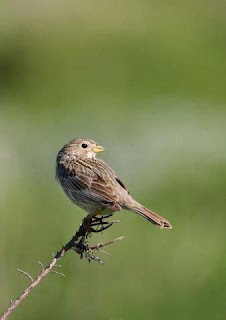Wednesday 29 July 2009
Titchfield Haven, National Nature Reserve [NNR]
Saturday 25 July 2009
Farlington Marshes Wetland Bird Survey [WeBS]

Farlington Marshes (Hampshire Ornithological Society 2009)
Farlington Marshes is located in Langstone Harbour, between the islands of Portsea and Hayling. The marshes cover an area of 125 hectares. It is a Site of Special Scientific Interest [SSSI] comprising habitats of flower-rich grazing, reed-beds, both freshwater and brackish marshes and lagoons as well as scrub. The site also has designation as an SPA and Ramsar site. Farlington Marshes is managed by the Hampshire and IOW Wildlife Trust, whilst the islands and offshore saltmarshes are managed by the RSPB. The harbour provides an internationally important winter feeding ground for wildfowl and waders including the Brent goose Branta bernicla and Black-tailed godwit L. Limosa islandica

L. Limosa islandica (own library)
The Wetland Bird Survey (WeBS), organised by the British Trust for Ornithology (BTO) is a monthly survey of wetland sites for wildfowl and wader species which takes place nationally across a wide range and number of wetland habitats. The data is used to inform policy makers on the development of coastal and wetland sites. Whilst the core count dates take place September through to March, Farlington Marshes like many other sites is counted throughout the year.
The WeBS count at Farlington Marshes begins at high tide when the maximum number of birds are shorebound on the marshes and surrounding islands, then continues on through to the "flight" when wildfowl and waders leave the islands to the east of the marshes to feed on the exposed mudflats. Following the flight - birds left on the islands are also counted. The count proceeds over five hours. The WeBs count at Farlington Marshes was undertaken by five people, whilst the RSPB warden undertook counts at other sites across Langstone Harbour.
The initial returns indicate that the count totalled 27 wader and wildfowl species including: 852 oystercatcher Haematopus ostralegus and circa 1250 curlew Numenius arquata; 233 Black-tailed godwits; 23 greenshank Tringa Nebularia; 23 cormorants Phalocrocorax carbo; 3 Brent goose; 5 knot Calidris canuta and a single common sandpiper Actitus hypoleucos.

Actitus hypoleucos (own library)
2 species of tern Sterna spp; 5 species of gull Larus spp and eight other avifauna species including a single peregrine falcon Falco peregrinus were also recorded on the day.
Thursday 23 July 2009
Isle of Wight Cornflowers
Via Fe and Chuck Eccleston:
A couple of weeks ago we joined a 'Farmland Visit' organised by the Game and Wildlife Conservation Trust to Cridmore Farm, Chillerton on the Isle of Wight. The visit was organised to enable members of the public to see the extensive areas [approximately 5 acres] of Corn Marigolds Chrysanthemum segetum which were interspersed with large numbers of Cornflowers Centaurea cyanus, these fields can be seen from the road but only show up as bright yellow patches in amongst the green fields of wheat.
Both these plants are in a nationally perilous state due to the introduction of herbicides and fertilisers in the 1950's. By the end of the 1970's a dramatic decline was noted in the Cornflower throughout the country and it is now only found in its natural state in three small sites: Suffolk, Lincolnshire and the Isle of Wight.
The owner of the farm, together with his farm manager, take great care to preserve these wildflowers which have occurred naturally on the site for in excess of 100 years.
The presentation by the G&WCT also focussed on the decline of many farmland birds including the Grey Partridge Perdix perdix, Yellowhammer Emberiza citrinella and Corn Bunting Miliaria calandra and the measures farmers can take to assist their recovery i.e. Stewardship Schemes run by Natural England.
Cornflower
Corncockle
Corn Marigolds and Cornflower
Corn Bunting
Yellowhammer












